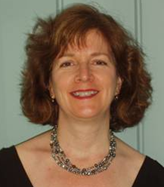Joan Fitzgerald is Professor and Director of the Law, Policy and Society Program at Northeastern University. Her new book, Emerald Cities: Urban Sustainability and Economic Development, is a refreshing look at how American cities are leading the way toward greener, cleaner, and more sustainable forms of economic development. Emerald Cities is very readable and Marco Trbovich of the Huffington Post wrote, “Fitzgerald combines the academic discipline of an urban planner with the rigors of shoe-leather journalism in crafting a book that documents where real progress is being made….” In the original post below Fitzgerald shares how she found the fine balance between “academic discipline” and “shoe-leather journalism”.
Emerald Cities is my first true crossover book—a serious piece of scholarly research rendered as a journalistic narrative for a wider readership. In recent years, I have had plenty of practice  on this front, writing several oped pieces for the Boston Globe and longer features for The American Prospect, a monthly magazine that often draws on academics to write many of its policy-oriented articles.
on this front, writing several oped pieces for the Boston Globe and longer features for The American Prospect, a monthly magazine that often draws on academics to write many of its policy-oriented articles.
My journalist and editor husband, Bob Kuttner, has long urged me to discover the joys of the interview, both on the record and on background. And indeed, when you follow a formal research design or rely purely on data, you don’t get to ask impertinent questions. You are at risk of missing what is really going on.
When I first started writing more popular pieces, Bob would say, “Get some quotes” and “talk to people off-the-record.” So I did. Interviewing facilitates networking. One interview leads to another. I was intrigued at how much I learned—say about an industry such as solar or wind and the true state of play as opposed to the self-serving claims—in a few phone calls with industry insiders. If one is intellectually honest, this kind of interview is a legitimate scholarly technique as well as a tool of narrative journalism.
Journalistic reportage also helps bring prose alive. Reporting on data without bringing in a human element makes for dry reading. Another discipline of writing in a more journalistic style is that your ideas need to be compressed into a lot less space. The standard academic article is 25 pages. An oped piece is typically three typescript pages and a Prospect policy article between six and eight. It is amazing how many words some academic writers waste, telling you what they are going to tell you, then telling it, and then telling you what they told you.
The discipline of tight, lucid writing also clarifies one’s thinking process. In fact, I now require my policy students to write regular short assignments or op-ed-style pieces. At first, they hate them—they find it easier to write 10 pages than 2, which reminds me of the old saying, “I would have written it shorter but I didn’t have the time.” It does take time, and many drafts. Professor John Kenneth Galbraith, a scholar much admired for his incisive prose was once told by an admirer how “


